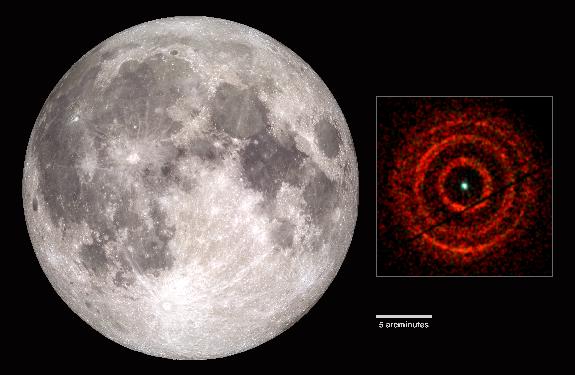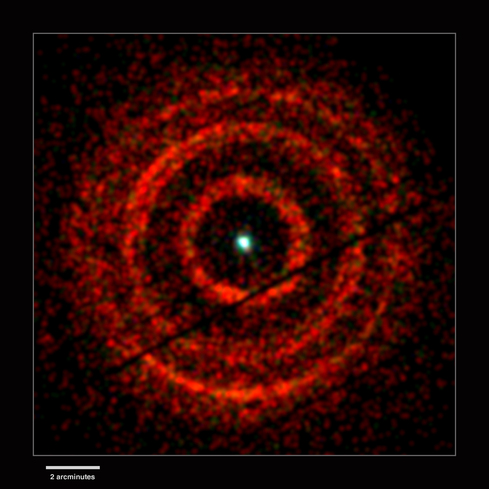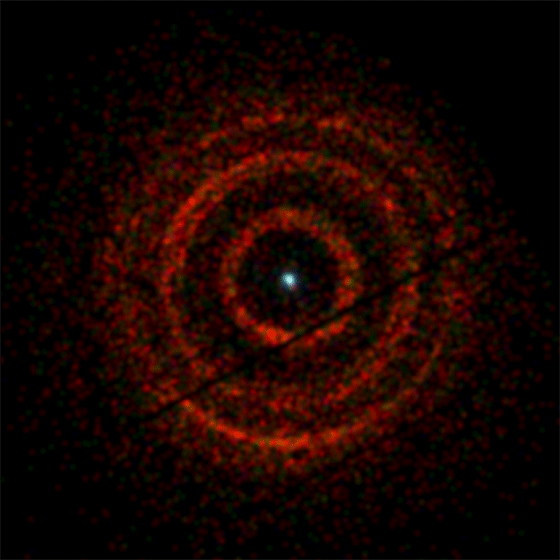|
site map
- Home
- About
- Support
- Data Access
- Data Analysis
- Data Products
- Publications
-
Links
Databases NED Simbad GCN circulars archive GRB data table Software & Tools Swift Software (HEASoft) Xanadu WebPIMMS Institutional Swift Sites GSFC PSU OAB SSDC MSSL University of Leicester
V404 Cyg
Black hole 'bull's-eye' sheds light on interstellar dust - University of Leicester
NASA's Swift Reveals a Black Hole Bull's-eye - NASA

The Swift X-ray image of V404 Cyg shows a patch of the sky equal to
about half the apparent diameter of the full Moon.
Image credit: NASA's Scientific Visualization Studio (left), Andrew Beardmore (Univ. of Leicester) and NASA/Swift (right).
Click image for full resolution.
Image credit: NASA's Scientific Visualization Studio (left), Andrew Beardmore (Univ. of Leicester) and NASA/Swift (right).
Click image for full resolution.
Rings of X-ray light centred on a binary system containing an erupting
black hole (dot at centre) were imaged by the X-ray Telescope aboard
NASA's Swift satellite on June 30. A narrow gap splits the middle ring
in two. Colour indicates the energy of the X-rays, with red representing
the lowest (800 to 1,500 electron volts, eV), green for medium (1,500 to
2,500 eV), and the most energetic (2,500 to 5,000 eV) shown in blue. For
comparison, visible light has energies ranging from about 2 to 3 eV. The
dark diagonal lines through the image are artifacts of the imaging
system.
Image credit: Andrew Beardmore (Univ. of Leicester) and NASA/Swift.
Click image for full resolution.
Image credit: Andrew Beardmore (Univ. of Leicester) and NASA/Swift.
Click image for full resolution.
Animated image of the expanding rings (described above) created from observations between 30th June and 4th July.
Video credit: Andrew Beardmore (Univ. of Leicester) and NASA/Swift.
Click image for full resolution.
Video credit: Andrew Beardmore (Univ. of Leicester) and NASA/Swift.
Click image for full resolution.


